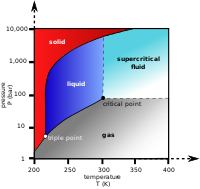
Photo from wikipedia
Every year, grapevine pruning produces huge amounts of residue, 90% of which are from vine shoots. These are a rich source of natural antioxidants, mostly phenolic compounds, which, when properly… Click to show full abstract
Every year, grapevine pruning produces huge amounts of residue, 90% of which are from vine shoots. These are a rich source of natural antioxidants, mostly phenolic compounds, which, when properly extracted, can give rise to added-value products. However, their lack of solubility in aqueous media and high susceptibility to thermal and oxidative degradation highly limit their bioavailability. Encapsulation in suitable carriers may have a positive impact on their bioavailability and bioactivity. Previous data on vine-shoot extraction have identified gallic acid (GA) and resveratrol (RSV) as the main phenolic compounds. In this work, model dry powder formulations (DPFs) of GA and RSV using hydroxypropyl cellulose (HPC) as carriers were developed using Supercritical CO2-Assisted Spray Drying (SASD). A 32 full factorial Design of Experiments investigated the solid and ethanol contents to ascertain process yield, particle size, span, and encapsulation efficiency. Amorphous powder yields above 60%, and encapsulation efficiencies up to 100% were achieved, representing excellent performances. SASD has proven to be an efficient encapsulation technique for these phenolic compounds, preserving their antioxidation potential after three months in storage with average EC50 values of 30.6 µg/mL for GA–DPFs and 149.4 µg/mL for RSV–DPF as assessed by the scavenging capacity of the DPPH radical.
Journal Title: Molecules
Year Published: 2022
Link to full text (if available)
Share on Social Media: Sign Up to like & get
recommendations!